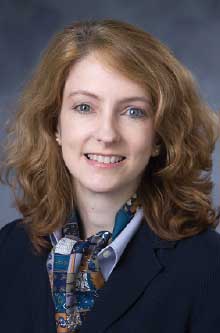As ECT Marks 80th Birthday, Experts Reflect on Its Future
It has been 80 years since electroconvulsive therapy (ECT) was first used on a human patient. A group of ECT researchers and practitioners marked the anniversary during a session at APA’s 2018 Annual Meeting in May, where they reflected on the past, present, and future of the first member of the neuromodulation family.
 “ECT has come far,” said session chair Sarah Lisanby, M.D., the director of the Division of Translational Research at the National Institute of Mental Health (NIMH). The procedure used to be a one-size-fits-all approach, during which patients received a standard seizure-inducing dose of current. Today, ECT involves a brief electrical stimulation to targeted regions of the brain while the patient is under anesthesia and has been given a muscle relaxant. “ECT has come far,” said session chair Sarah Lisanby, M.D., the director of the Division of Translational Research at the National Institute of Mental Health (NIMH). The procedure used to be a one-size-fits-all approach, during which patients received a standard seizure-inducing dose of current. Today, ECT involves a brief electrical stimulation to targeted regions of the brain while the patient is under anesthesia and has been given a muscle relaxant.
Despite the proven effectiveness of ECT, Lisanby acknowledged that the therapy remains underused largely because of ongoing misperceptions and stigma. With newer techniques such as transcranial magnetic stimulation (TMS) now available, ECT must continue to evolve to remain relevant, she said.
Modern neuroscience can assist this evolution by elucidating how ECT exerts its therapeutic effect, Chris Abbot, M.D., medical director of the ECT program at the University of New Mexico, told the audience. Researchers still don’t know whether the therapeutic effects of ECT are due to the seizure caused by ECT or the electric current, Abbot explained. He noted that studies have shown that administering the seizure-inducing chemical fluorothyll to patients with depression can improve depressive symptoms; similar findings have been seen in patients who received nonconvulsive electrotherapy.
Researchers are using functional MRI to better understand how the brain changes following ECT sessions. Studies by Abbot and others have shown that ECT is associated with an increased volume in several brain regions, including the hippocampus (which regulates memory), and more connections between these regions. This work has also suggested that people with smaller hippocampal volumes prior to treatment are more likely to benefit from ECT.
“If we can show that in addition to not damaging the brain, ECT even restores some brain function, it may change how people see this treatment and reduce stigma associated with ECT,” he said.
It’s also possible that imaging combined with clinical measures could soon be used to identify depression subtypes that respond well to ECT, Abbot said. Studies have shown that neuroimaging can be used to determine subtypes of depression that respond differently to TMS.
Other researchers are focused on ways to make ECT more precise, NIMH research fellow Zhi Deng, Ph.D., said during the session. He noted that while modern ECT offers different options for electric wavelengths, the current intensity, or amplitude, is fixed. Because people have anatomical differences, such as hair type or skull thickness, this can impact how big of an electric field they receive from ECT.
“Why not make amplitude a variable in treatment, too?” Deng asked. Deng is currently using computer simulations to generate theoretical models showing which brain regions are stimulated when amplitudes are adjusted.
ECT typically involves the placement of two electrodes, one on each side of the head, though there is some flexibility in the exact positioning. “But there are no hard rules that say ECT can only use two electrodes,” Deng said.
By using multiple small electrodes—like those used for EEG tests—instead of the large steel disks currently used for ECT, Deng thinks that ECT can become more focalized and target specific brain regions, potentially making the technology safer but still highly effective.
Patients with treatment-resistant depression could also benefit from an emerging technology known as magnetic seizure therapy (MST), which uses magnetic fields instead of electric current to induce seizures, explained Jeff Daskalakis, M.D., Ph.D., a professor of psychiatry at the University of Toronto.
Daskalakis recently completed an open-label, eight-week study of MST on 100 patients with treatment-resistant depression. The study tested three different frequencies of magnetic fields (low, medium, and high) and the results showed that at the high frequency almost 40 percent experienced a remission of their symptoms. That rate is higher than what TMS has achieved in clinical trials (about 30 percent of patients achieved remission), though it was not as high as the 50 percent remission rates following ECT. However, Daskalakis said that MST requires less anesthesia than ECT, which patients may find more favorable.
|
|
|
|
|

